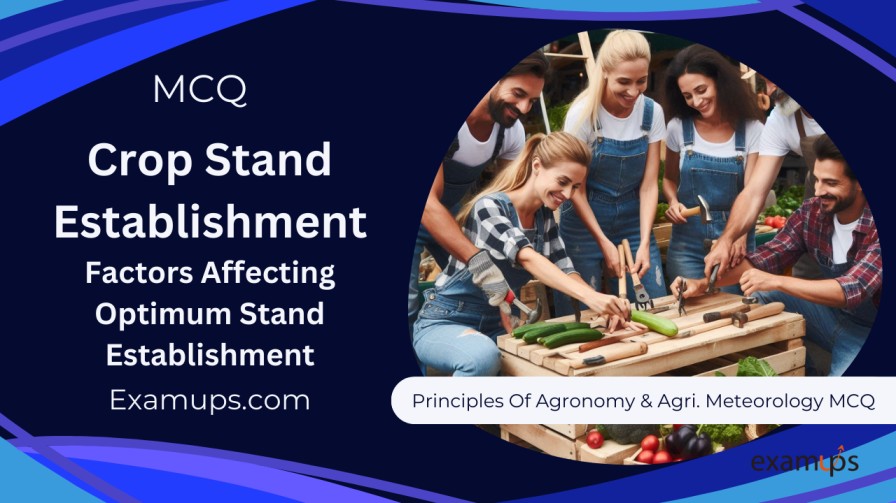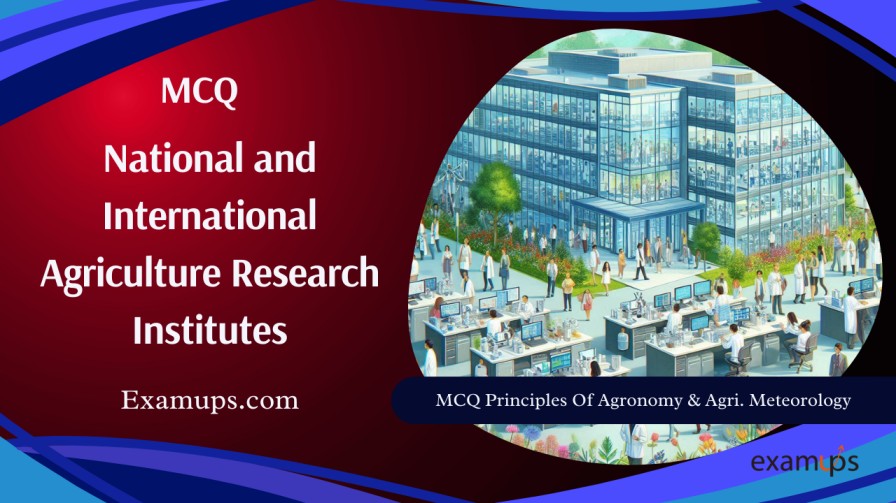MCQs on Crop Stand Establishment – Factors Affecting Optimum Stand Establishment: MCQs like ICAR-JEF, ICAR-SRF, ICAR-NET, IBPS-AFO/SO, Pre-PG, BHU Pre-PG, IFFCO-AGT, CCI, FCI, B.sc, M.sc, etc.
Here is a reformatted version of the MCQs on Crop Stand Establishment – Factors Affecting Optimum Stand Establishment:
Multiple-Choice Questions on Crop Stand Establishment
1. What does seed treatment with fungicides primarily aim to achieve?
a) Increase seed size
b) Enhance seed germination
c) Prevent seed-borne and soil-borne diseases
d) Improve seed color
Answer: c) Prevent seed-borne and soil-borne diseases
Explanation: Fungicidal treatment involves applying chemicals to seeds to prevent seed-borne and soil-borne diseases, ensuring a healthy start for the crop.
2. Which of the following is used to control scale insects in sugarcane through pesticide treatment?
a) Mancozeb
b) Malathion
c) Carbendazim
d) Captan
Answer: b) Malathion
Explanation: Malathion is commonly used as a pesticide treatment to control scale insects in sugarcane, providing protection against certain pests during the establishment phase.
3. What is the purpose of scarification in seed treatment?
a) To add color to the seeds
b) To soften or remove the hard seed coat
c) To increase seed size
d) To decrease seed germination time
Answer: b) To soften or remove the hard seed coat
Explanation: Scarification involves rubbing seeds against a hard surface or treating them to break down the tough outer layer, allowing for easier germination.
4. What is a common seed treatment for legumes to assist with nitrogen fixation?
a) Fungicidal treatment
b) Pesticide treatment
c) Rhizobium treatment
d) Hot water treatment
Answer: c) Rhizobium treatment
Explanation: Rhizobium treatment involves coating seeds with specific Rhizobium cultures to promote atmospheric nitrogen fixation, which benefits legumes during crop establishment.
5. What is the optimal temperature and duration for hot water treatment in sugarcane to control red rot and smut diseases?
a) 45°C for 20 minutes
b) 52°C for 30 minutes
c) 60°C for 10 minutes
d) 75°C for 5 minutes
Answer: b) 52°C for 30 minutes
Explanation: Hot water treatment at 52°C for 30 minutes is a common method to control red rot and smut diseases in sugarcane, helping to ensure healthy crop establishment.
6. Why is breaking seed dormancy important for crop stand establishment?
a) To improve seed color
b) To prevent diseases
c) To ensure uniform germination
d) To reduce seed size
Answer: c) To ensure uniform germination
Explanation: Breaking seed dormancy helps in ensuring uniform germination, leading to consistent crop stand establishment.
7. Which type of seed bed preparation is ideal for crops like groundnut and redgram?
a) Coarse tilth
b) Fine tilth
c) Medium tilth
d) No tilth
Answer: a) Coarse tilth
Explanation: Coarse tilth is preferred for crops like groundnut and redgram, as it provides adequate soil structure and drainage for optimal growth.
8. What effect can late sowing have on rain-fed crops?
a) Increased yields
b) Reduced yields
c) Enhanced germination
d) Reduced pest incidence
Answer: b) Reduced yields
Explanation: Late sowing can lead to reduced yields in rain-fed crops, as the crop’s maturity may coincide with drought, and it may be more prone to pests and diseases.
9. What is the primary purpose of mixing seed with other materials like sand or soil?
a) To increase the seed bulk for small-seeded crops
b) To reduce seed size
c) To improve seed color
d) To increase seed germination rate
Answer: a) To increase the seed bulk for small-seeded crops
Explanation: Mixing seed with other materials increases the bulk, allowing for more even sowing, especially in small-seeded crops like Sesamum, Lucerne, and mustard.
10. Which of the following factors does NOT significantly affect optimum stand establishment?
a) Seed treatment
b) Seed color
c) Seed bed preparation
d) Time of sowing
Answer: b) Seed color
Explanation: Seed color does not significantly affect crop stand establishment, while factors like seed treatment, seed bed preparation, and time of sowing play crucial roles in achieving optimal stand establishment.










